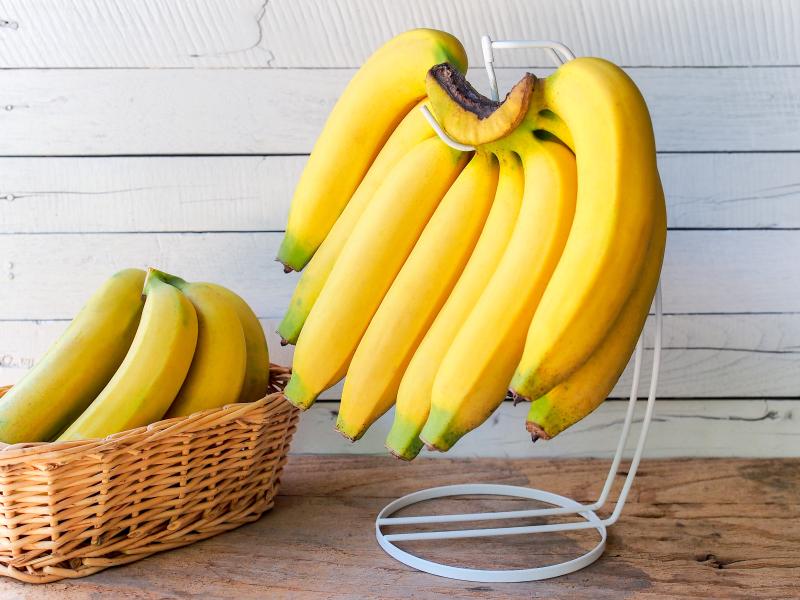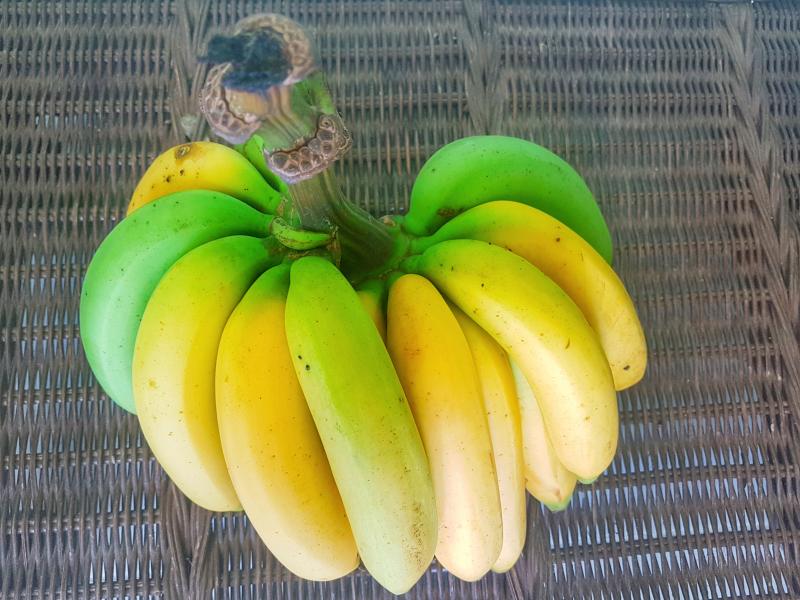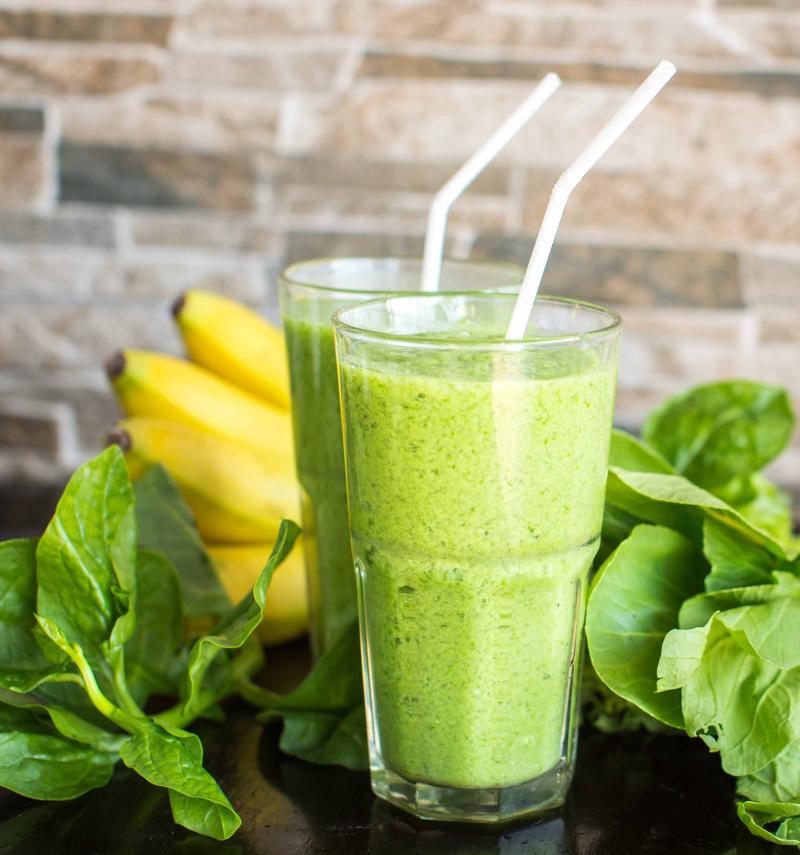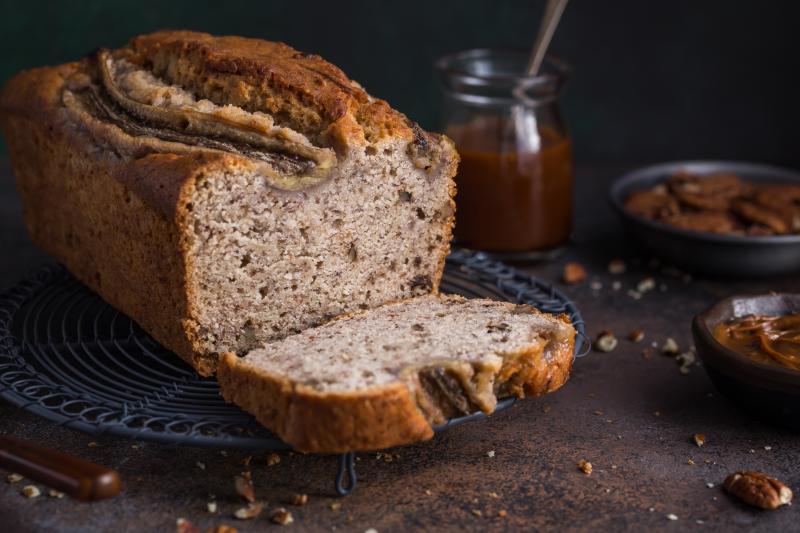As a chef, I’ve found bananas to be culinary heroes, especially when I stumbled upon the trick of using overly ripe ones for an unforgettable banana bread.

Not only do they add unparalleled sweetness and moisture to dishes, but bananas are also among the few fruits friendly to those with sensitive stomachs. Their versatility and gentle nature make them indispensable in my kitchen.
Let’s explore how this fruit can elevate our cooking and soothe our stomachs.
Highlights
- Boost Your Mood with Every Bite: Bananas not only sweeten dishes but also contain dopamine, a natural mood enhancer, making every serving a step towards happiness.
- Dietary Friendliness: Perfect for those with sensitive stomachs, bananas are gentle and soothing, making them an excellent choice for low-acidity diets.
- Culinary Creativity: From substituting fats in baking to enriching the flavors and textures of pancakes and curries, bananas showcase their incredible culinary versatility.
In this article:
Are Bananas Acidic?

The taste and texture of a banana can often lead to assumptions about its acidity. Contrary to the common belief that bananas are acidic, their pH level actually tells a different story, shifting with ripeness.
Unripe, green bananas do exhibit a certain level of acidity, with a pH ranging from 4.5 to 5.2, lending them a slightly tart flavor and firmer texture.
However, as bananas ripen, they undergo a significant decrease in acidity. A fully ripe banana reaches a pH of about 6.5, edging much closer to the neutral mark of 7 on the pH scale.
Comparing Banana Acidity to Other Fruits
This nuanced shift in acidity from slightly tart to nearly neutral as bananas ripen is not only fascinating but also places bananas in a unique category compared to other fruits.
Unlike pineapples and cherries, which are known for their tangy profiles and lower pH values, bananas offer a gentler alternative.
They share a more similar acidity level with apples and are even less acidic than some mangoes and melons, making them a friendlier option for those with sensitive stomachs or those seeking fruits with milder acidity.
What Makes Bananas Slightly Tart?
1. Ripeness and Its Impact on Bananas

When we bite into a banana, its taste and texture can give us a hint about its nature. What a contrast between an unripe green banana and its fully mature counterpart!
Unripe:
- Color & Texture: Green and firmer.
- Acidity: Higher, with a pH between 4.5 to 5.2, lending a slightly tart flavor.
Ripe:
- Color & Texture: Yellow, potentially with brown spots, and softer.
- Acidity: Reduced, with a pH around 6.5, signifying increased sweetness.
This remarkable shift in pH is attributed to the breakdown of starches into sugars and a decrease in organic acids.
The result? Ripe bananas become not only easier to digest — offering relief for those with sensitive stomachs — but also more versatile in the kitchen.
2. Different Varieties, Different Acidity

The Cavendish variety, extensively planted since the 1950s for its disease resistance and market appeal, represents just a fraction of the banana diversity available globally.
For instance, sweeter banana varieties like Manzano, Gros Michel, and Red Bananas offer unique flavors with slightly lower acidity levels.
These varieties, appreciated for their distinct sweetness and creamy textures, provide a delightful alternative for banana enthusiasts looking to explore beyond the conventional choice.
3. Conditions in which the Fruit is Grown
Bananas from the cooler, high-altitude regions of Costa Rica typically have a higher acidity than those from Ecuador’s warm coastal areas, showcasing how geographical and climatic differences subtly shape their flavor profiles.
Nutritional Content of Bananas

Bananas aren’t just a treat for the taste buds; they’re loaded with essential nutrients that I consider indispensable in my daily diet.
Whether I’m snacking on one to quickly satisfy hunger or using them to enrich my dishes, these yellow marvels contribute significantly to my nutritional intake:
- Energy Boost:High in carbohydrates, mainly sugars like glucose, fructose, and sucrose, bananas provide a quick energy boost, making them perfect for a pre-workout snack or a midday pick-me-up.
- Potassium Powerhouse: A medium-sized banana offers about 422 mg of potassium, covering roughly 9% of an adult’s daily value, supporting heart health and muscle function.
- Fiber Full: Containing about 3 grams of fiber, bananas can help regulate the digestive system, promoting regularity and contributing to satiety, which aids in weight management.
- Vitamin C and B6: A banana provides 11% of the daily vitamin C value for men and 14% for women, plus over 33% of vitamin B6, crucial for immune function, brain health, and metabolism.
- Antioxidant Rich: Bananas come loaded with antioxidants, including dopamine and catechins, which can reduce damage from free radicals and lower the risk of some diseases.
- Magnesium Source: Calm yourself with just a banana, which provides 8-10% of the daily magnesium value, supporting bone health and energy production, and 13-17% of the daily manganese value, essential for skin health and metabolism.
Incorporating Bananas into a Low-Acidity Diet

Choosing bananas at their peak ripeness not only treats your taste buds but also ensures your meals are friendly to a sensitive digestive system.
Fully ripe bananas, with their lower acidity levels, are incredibly gentle on sensitive stomachs, making them a perfect addition to a low-acidity diet.
The sweet flavor and soft texture of these yellow delights offer a versatile ingredient that can be seamlessly integrated into a variety of dishes, enriching your diet with both health benefits and culinary versatility.
Here’s how you can enjoy bananas in your low-acidity eating plan:
- Smoothies: Blend a ripe banana with other low-acid fruits, such as melons or peaches, and a splash of almond milk for a stomach-friendly morning boost.
- Banana Bread: Use fully ripe bananas to bake a moist, sweet loaf that’s both comforting and easy on the digestive system.
- Oatmeal Topping: Slice a banana over your morning oats for added natural sweetness without the acidity.
- Frozen Treats: Freeze ripe banana slices and blend them into a creamy, ice-cream-like dessert that’s both indulgent and gentle on your stomach.
- Pancake Mix-In: Mash a ripe banana and add it to your pancake batter for a subtle sweetness and extra moistness, perfect for a leisurely breakfast or brunch.
Cooking with Banana Varieties: Acidity Mastery

As a chef, I’ve come to appreciate the subtle nuances that the pH level and acidity of bananas bring to the culinary table, especially when considering the array of varieties available.
Take banana bread, for example. I’ve found that using overly ripe bananas not only injects a natural sweetness into the loaf but also hits the sweet spot with acidity level, ensuring it reacts perfectly with baking soda for that ideal rise.
I’ve discovered also that bananas can even replace ingredients like margarine and butter in baking, offering a healthier alternative that still delivers on taste and texture.
This insight isn’t limited to just baking.
In my kitchen, ripe bananas are a key ingredient in banana pancakes, where their sweetness and moisture contribute to a soft, fluffy texture that’s simply irresistible.
And let’s not overlook savory dishes; in a Thai banana curry, selecting the right banana ripeness can significantly affect the dish’s acidity, sweetness, and overall texture, underscoring the incredible versatility of bananas in both sweet and savory dishes.
Final Thoughts
As we peel back the layers of our exploration, it’s evident that bananas blend culinary versatility with nutritional richness.
They navigate a spectrum of acidity, revealing a journey from tart to tender that not only pleases the palate but also caters to sensitive stomachs.
Beyond the omnipresent Cavendish lie sweeter, less acidic varieties, enriching our diets and dishes with their diverse flavors.
Whether in baking, smoothies, or savory meals, understanding bananas’ acidity and varieties enhances our culinary creations.
Embrace the banana, a fruit that marries taste with health, making every bite a testament to its understated complexity and charm!